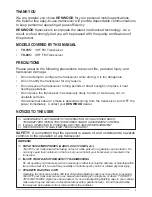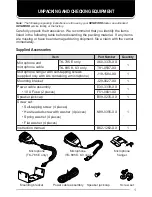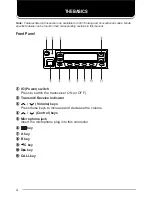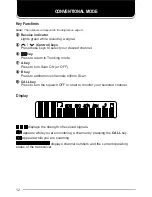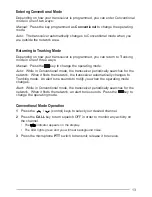
9
■
Receiving a Voice Call
1 When a call is received, the caller’s unit number appears on the main
display and “CAL” appears on the 3-digit sub-display.
•
If you have the caller’s address set up in your transceiver, the call address is
displayed instead of the unit number.
•
Group conference calls are represented by “GRP” rather than “CAL”. Group
broadcast calls are represented by “BCC”.
•
Special calls are denoted as follows:
I-Fleet:
A call from a different fleet (Inter Fleet).
I-Prefix:
A call from a different prefix (Inter Prefix).
PABX:
A call from a PABX telephone system.
PSTN:
A call from a PSTN telephone system.
2 Press the microphone PTT switch to respond to the call.
•
The remaining call time appears on the display.
3 When the call ends, the display returns to the call address which was
previously displayed. However, if you end the call by pressing the key,
“END” momentarily appears on the display before returning to the call
address.
Status Calls
■
Making a Status Call
1 Select a call address using one of the following two methods:
i)
Select a call address from memory:
Select your desired call address
using the
/
(control) keys if a call address has been stored in
the transceiver memory.
ii)
Enter a call address using the microphone keypad:
Enter your desired
call address using the microphone keypad (keys 0 ~ 9,
, and #).
Refer to the appendix {page 15} for the available dial strings and
control codes.
2 Press the Status/ Stack key (default is the A key), then press the
/
(control) keys to select your desired status.
•
The status number appears on the 3-digit sub-display.
3 Press the CALL key (or microphone PTT switch if “PTT to Initiate Call” is
programmed in the transceiver) to send the status.
•
“Calling” appears on the display.
4 When the status has been received by the called party, “Complete”
momentarily appears on the display before returning to the call address of
the call you just made.
Содержание TK-785
Страница 20: ...17 ...


